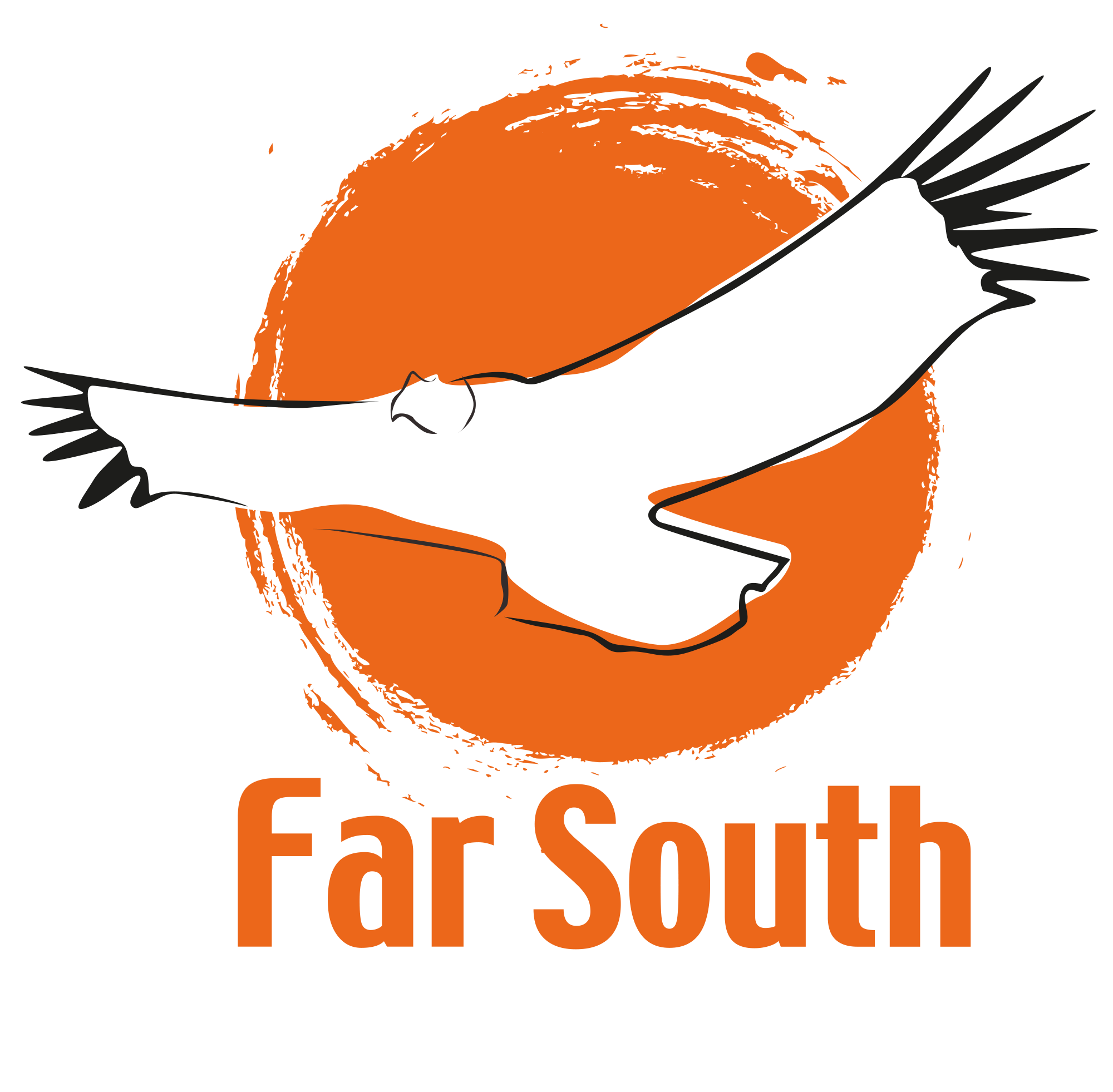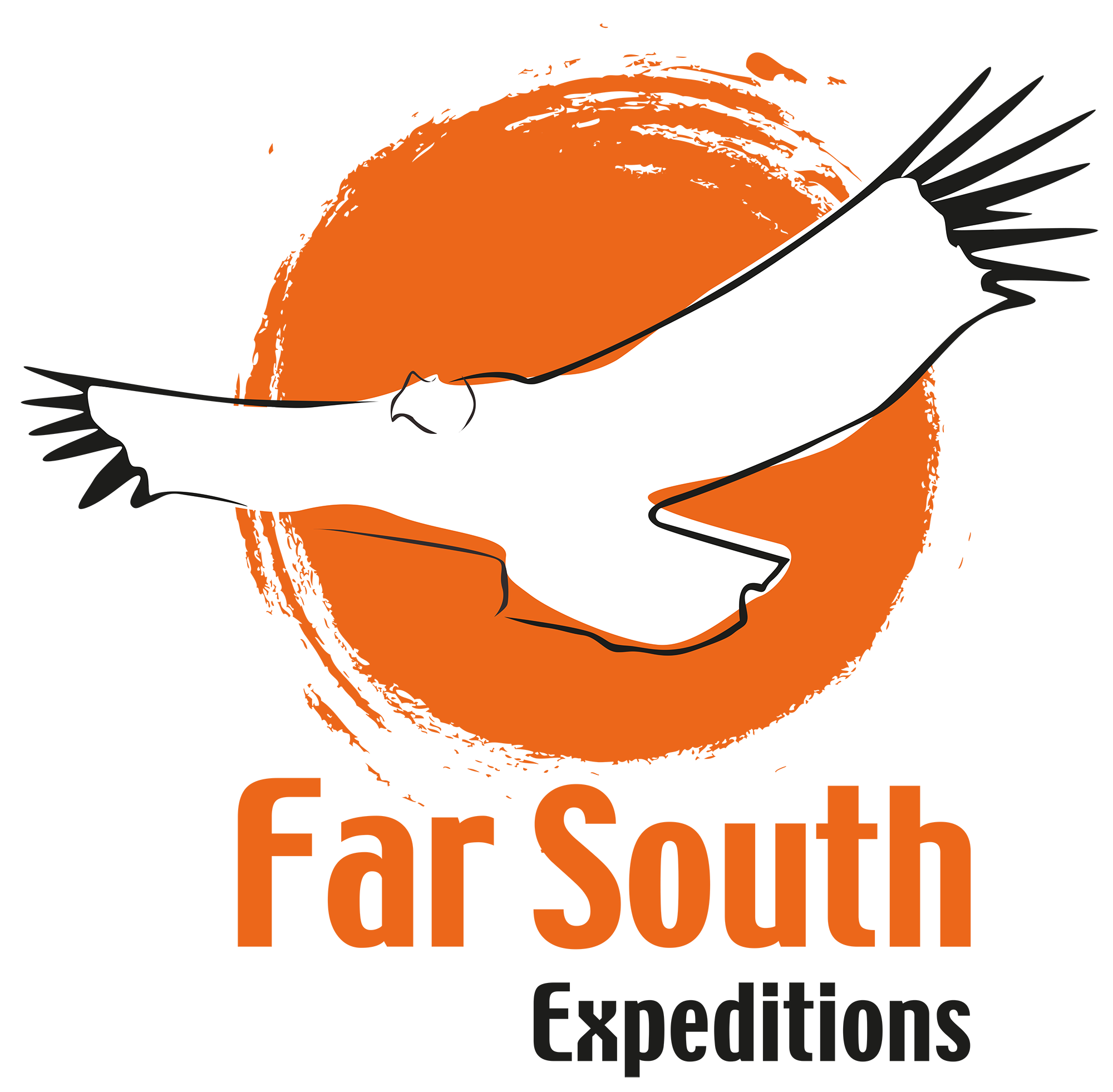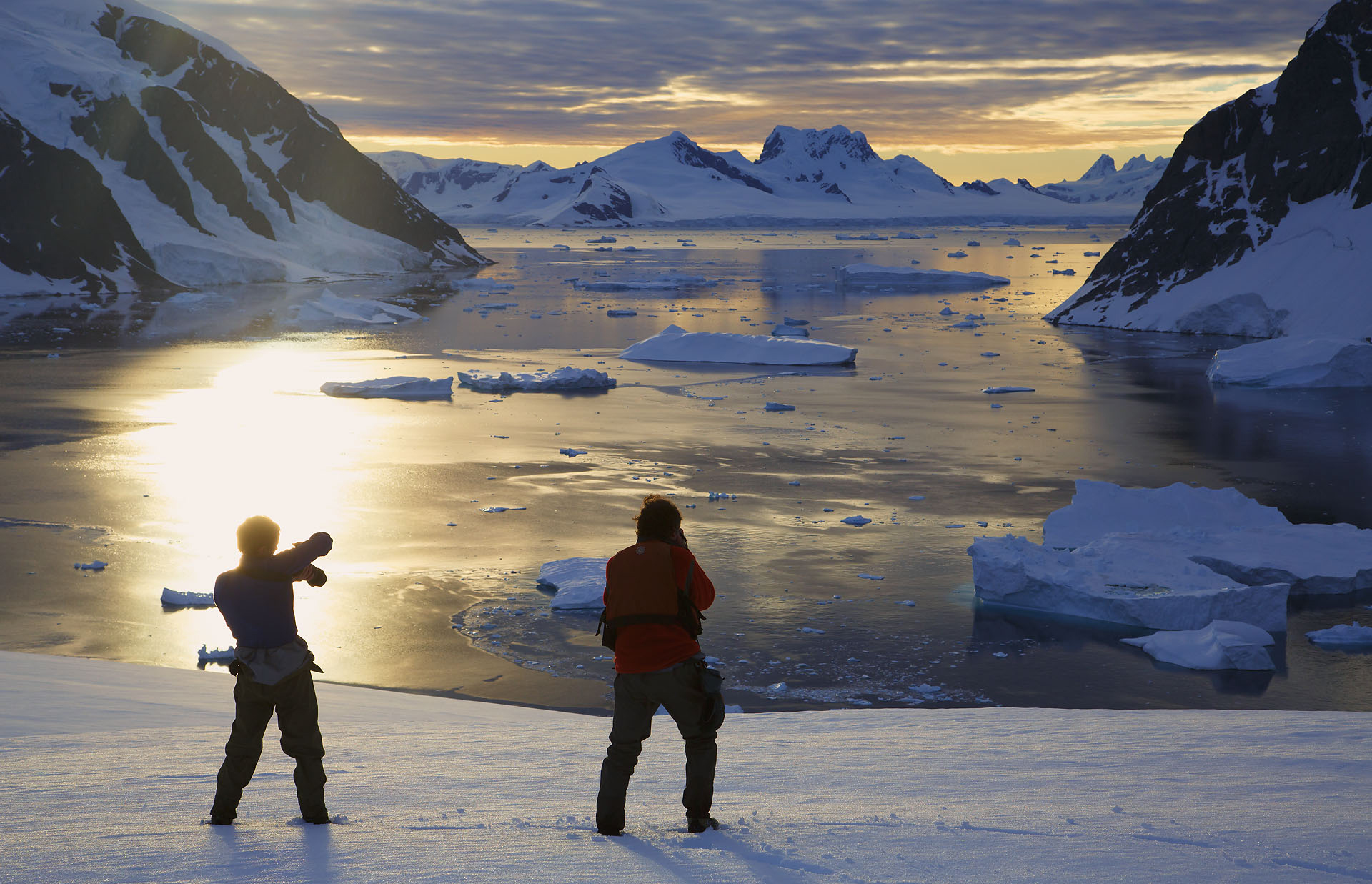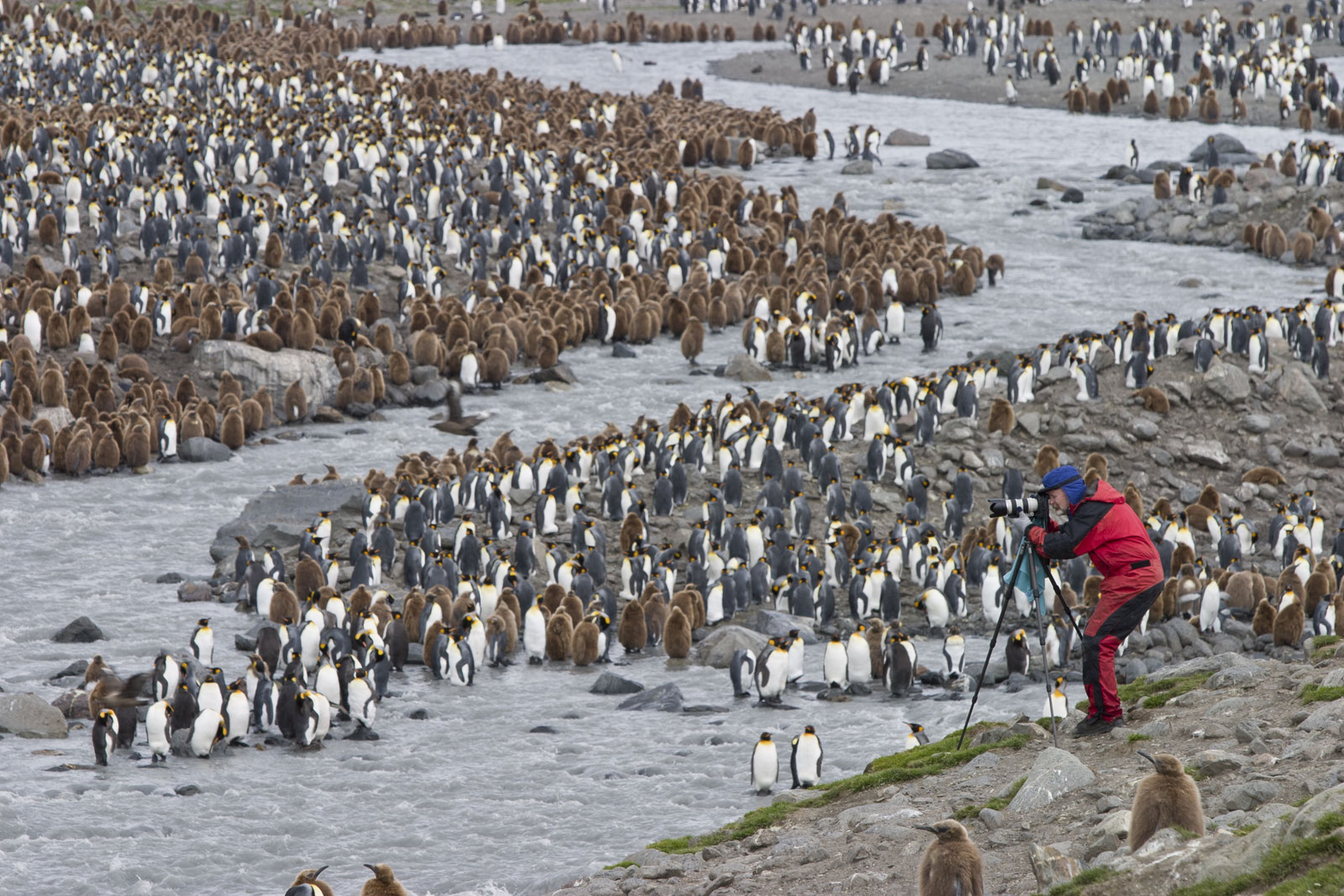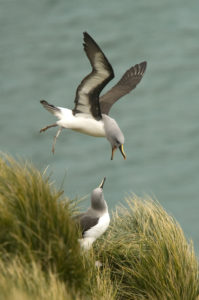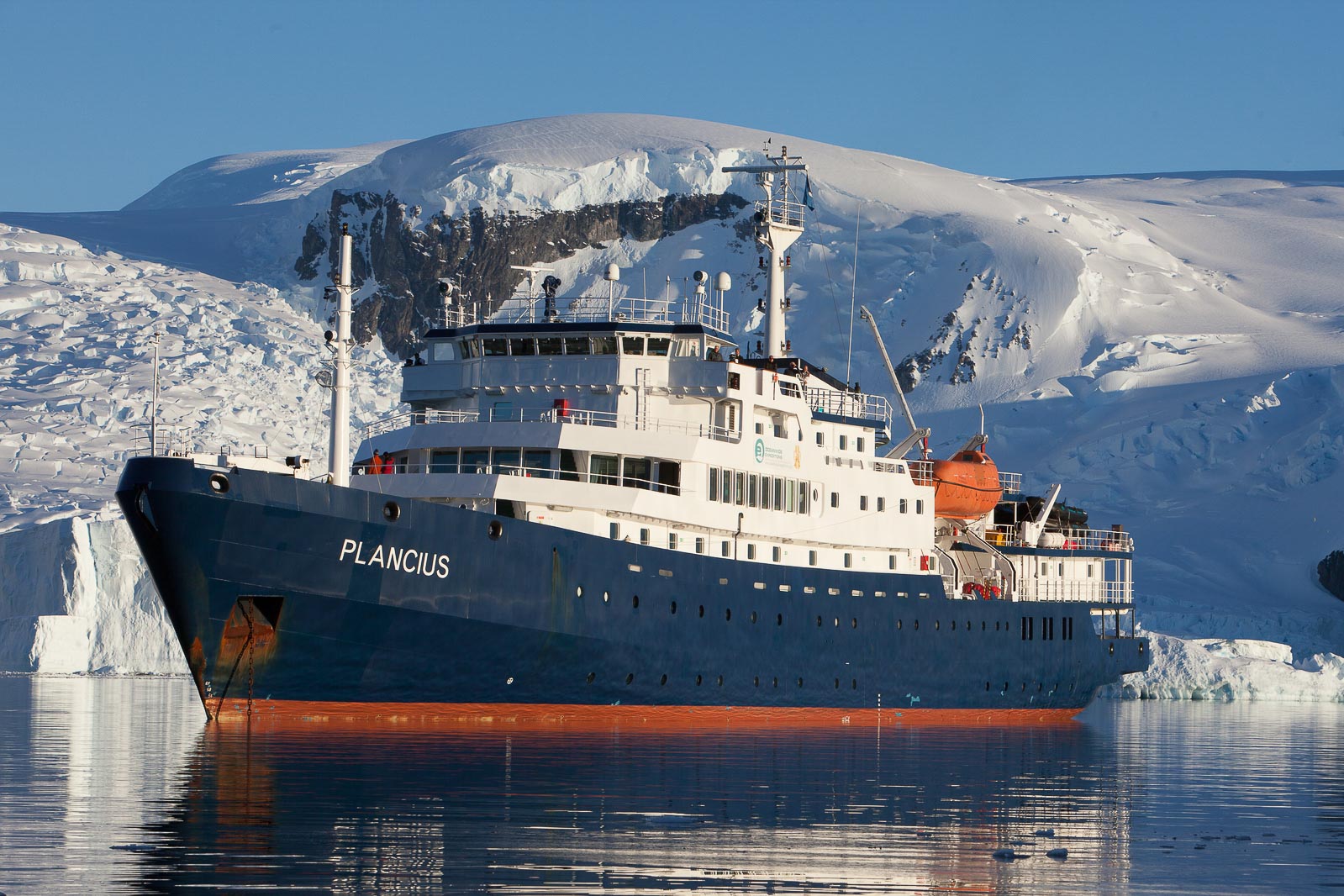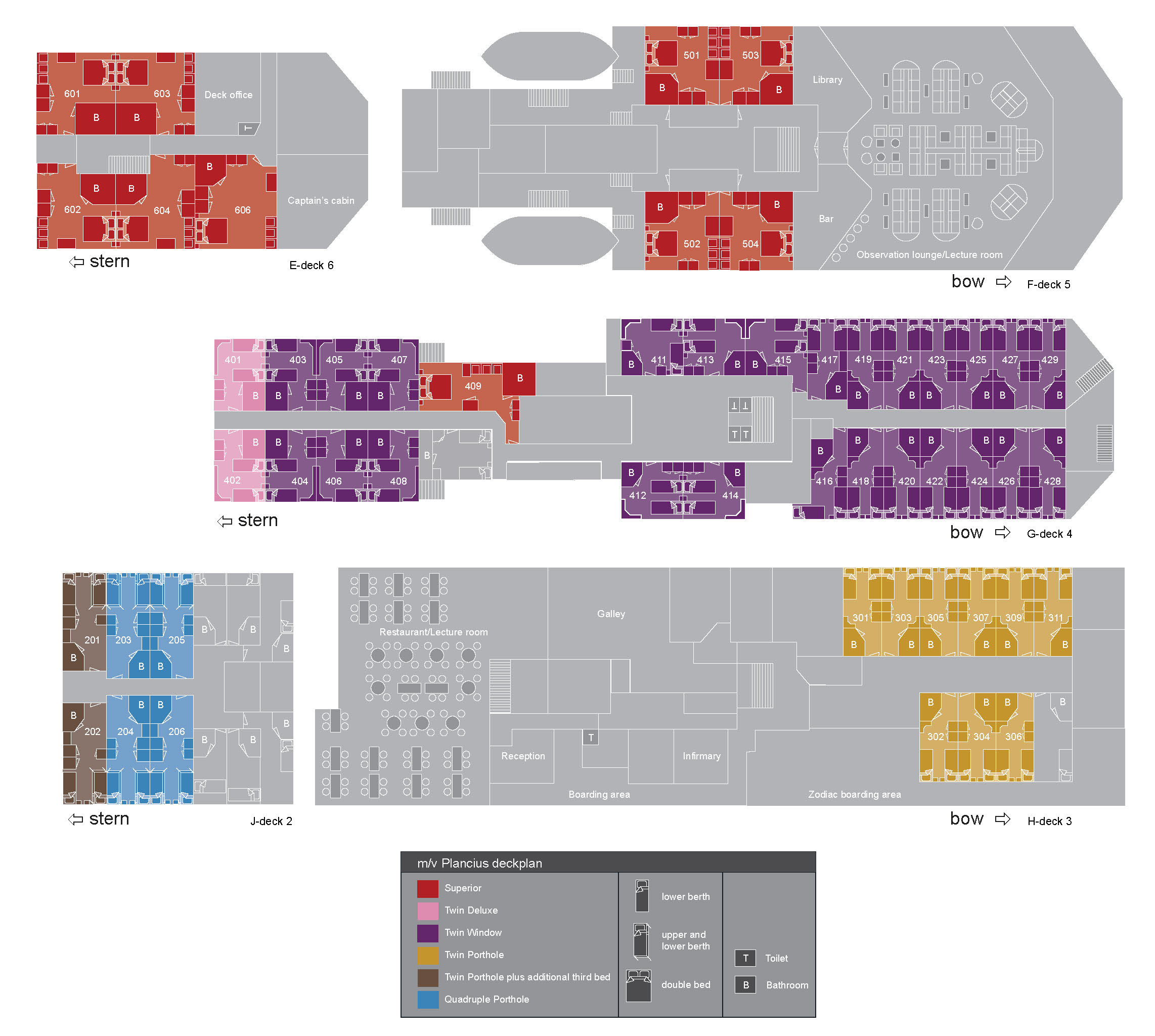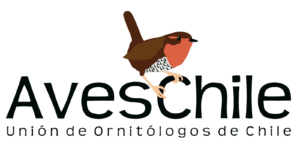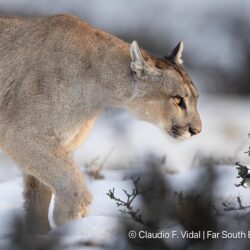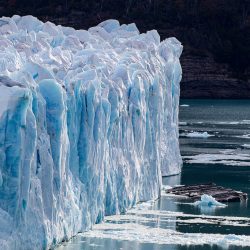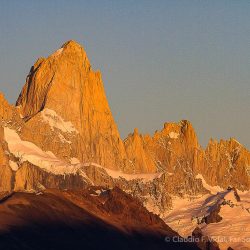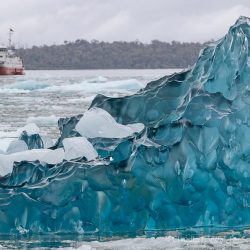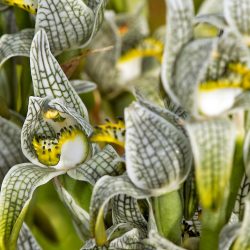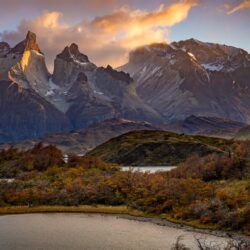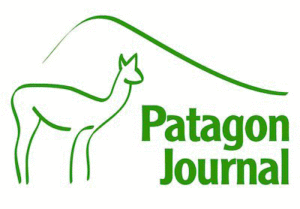Cheesemans South Georgia Expedition. Experience the vibrant spring of South Georgia Island and the early season of the Antarctic Peninsula. While beneath the towering, snow-blanketed mountains of South Georgia Island, observe and photograph special wildlife behaviors seldom seen. Watch southern elephant seal bulls fight for territories while females nurse young. Stand amongst vast colonies of king penguins and watch macaroni penguins launching into the ocean. See distinctly marked gray-headed albatross attending to their cliffside nests, and awkward wandering albatross young attempting first flight.
** Early-bird discount | Save $1,000 per person through October 15, 2019 **
SOUTH GEORGIA & ANTARCTIC PENINSULA
Cheesemans South Georgia Expedition | Earth’s Greatest Wildlife Destination
23-day wildlife cruise | Oct 21 – Nov 12, 2021 | Starts: Punta Arenas, Chile, Ends: Ushuaia, Argentina
During this time of year, the Antarctic Peninsula is in the beginnings of its spring season when the ice in the Weddell Sea can open up, allowing opportunities for lone emperor penguins to wander on ice floes. At penguin colonies, you’ll find penguins courting, setting up nests, and some laying eggs. Through over twenty-five years of experience in the Antarctic, we offer the most in-depth exploration of one of the densest wildlife spectacles found anywhere in the world, and with only 100 passengers, you’ll have ample opportunities to experience this spectacle during every landing and Zodiac cruise.
Overview
Highlights
• Spend six full days on South Georgia Island and six full days in the Antarctic Peninsula and South Shetland Islands with maximum shore time and Zodiac cruising.
• Snorkel or SCUBA dive among icebergs, curious seals and penguins, and other critters.
• See five penguin species (possibly six)! Plus, many species of whales, seals, albatross, and seabirds.
• Hear the cacophony and smell of king penguins as you walk near colonies of up to 300,000 birds.
• See gentoo, macaroni, chinstrap, and Adelie penguins as they start their breeding cycles.
• Marvel at dramatic snow-capped mountains descending into valleys and glacier-fed rivers emptying into the ocean.
• Watch southern elephant seal bulls defend their territories from competing bulls and females nursing pups during their peak breeding season.
• See wandering albatross chicks and endangered gray-headed albatross on nests, only possible this time of year.
• Hike or snowshoe on South Georgia Island. Take shorter walks in the Antarctic Peninsula.
• With only 100 participants, everyone can land and/or Zodiac cruise at once, rather than in separate groups.
• Our 15 leaders are polar specialists, photographers, and naturalists who will provide lectures, workshops, and guided excursions.
Trip Summary
Date | Description | Lodge | Meals |
| Oct 21 | Travel to Punta Arenas, Chile. | ||
| Oct 22 | Arrive in Punta Arenas, Chile from our Chile extension or from home. | Hotel Cabo de Hornos, Punta Arenas, Chile | |
| Oct 23 | Fly to Mount Pleasant, Falkland Islands. Board the ship from the flight or from our Falkland Islands extension. | On board the Plancius | B,D |
| Oct 24-25 | Sail to South Georgia Island. | On board the Plancius | B,L,D |
| Oct 26-31 | Spend six full days landing at our favorite sites in South Georgia. | On board the Plancius | B,L,D |
| Nov 1-2 | Sail from South Georgia to the Antarctic Peninsula. | On board the Plancius | B,L,D |
| Nov 3-8 | Spend six full days landing and Zodiac cruising along the Antarctic Peninsula and South Shetland Islands. | On board the Plancius | B,L,D |
| Nov 9-10 | Cross the Drake Passage to Ushuaia, Argentina. | On board the Plancius | B,L,D |
| Nov 11 | Disembark in Ushuaia and continue on our Falkland Islands tour or fly homeward. | B | |
| Nov 12 | Arrive home. |
Detailed Itinerary and Activities
Day 1 • October 21, 2021 • Depart Home
Day 2 • Oct 22 • Arrive In Punta Arenas, Chile
Arrive in Punta Arenas, Chile from our Chile extension or from home in time for our welcome reception and optional pre-trip biosecurity check. Upon arrival, our local agent will transfer you from the airport to the hotel. If you would like to arrive earlier, we can arrange divergent airport transfer and extra hotel nights.
Day 3 • Oct 23 • Fly To Mount Pleasant, Falkland Islands
Pick up your packed lunch at the hotel before you go to the airport to take the once-weekly flight from Punta Arenas, Chile to Mount Pleasant, Falkland Islands (not included in the trip cost). When you arrive in the early afternoon, you will be transferred to the ship in Stanley, or if you are on our Falkland Islands extension, you will be in Stanley already to board the ship. You will have time to walk through town and explore this small corner of the British Empire that appears as if time has forgotten it. Stanley is an attractive town and the last center of human population you will see before your arrival in Ushuaia, Argentina at the voyage’s end. You will be welcomed by our Captain and our fine staff and crew, as well as enjoy your first dinner aboard the ship before departing for South Georgia!
Days 4 & 5 • Oct 24-25 • Sail To South Georgia Island
By morning you’ll be far from the Falklands, heading southeast with albatross and other seabirds following the ship. You’ll stay busy by joining lectures on photography, wildlife, and ecology, familiarizing yourself on all aspects of ship life, preparing for what to expect on South Georgia, and enjoying views from the ship. You’ll cross the Polar Front (aka the Antarctic Convergence), where two bodies of water meet, and as the salty, cold Antarctic water mixes alongside warmer, fresher water from the north, the water temperatures plummet from about 39–43°F (4–6°C) to 32°F (0°C) in about eight cruising hours, creating nutrient-rich waters for birds, fur seals, and whales. Watch and photograph birds on the wing; wandering and black-browed albatross, plus a few southern or northern royal albatross should be following the ship. On previous expeditions, we have found almost a dozen species of petrels (including three storm-petrel and common diving-petrel species), six species of albatross, thousands of Antarctic prions, southern fulmars, greater and sooty shearwaters, and sometimes snow petrels. Whales you may encounter include fin, Antarctic minke, and southern right whales. During this time at sea, you’ll cross about 730 nautical miles with the prevailing current in our direction.
Days 6/11 • Oct 26-31 • Six Full Landing Days In South Georgia
Arrival time at South Georgia will depend on weather conditions and currents. We spend six full landing days on South Georgia, one of the most remote islands in the world, in this wild landscape of penguins, albatrosses, and seals. The mountainous rugged interior, a geologic continuation of the Andes chain, is carved by more than 150 glaciers into spectacular fjords and ringed by islands. Our timing in this voyage is carefully chosen to experience South Georgia in a seldom seen but extremely vibrant time. You’ll arrive before the peak of fur seal breeding (usually in November and December), when males stake out territories at densities so high that travel ashore becomes both dangerous and disruptive. Instead, you arrive during the peak of southern elephant seal breeding. Many large male ‘beachmasters’ seek to own a stretch of beach and are willing to fight in great tonnages of seal jousting because here lie their best hopes for breeding. The male elephant seal puts so much into his territorial defense that his life expectancy is less than half of a female’s. But, if he is a successful ‘beachmaster’, this short life is one of great glory!
In the northeast of the island, you’ll land at some of the special sites that become very difficult to impossible to land on once fur seals are in the height of their breeding, and then you will travel south to experience the scale and density of penguin breeding colonies in St. Andrews Bay and Gold Harbour, absorbing the great richness and variety offered by South Georgia to voyagers so fortunate as ourselves. Here are some of the landing sites we hope to reach, though we will not be able to visit them all.
Due to the expeditionary nature of our voyage, specific stops cannot be guaranteed. Flexibility is paramount in expedition travel; our itinerary depends on the conditions. We strive to land often and stay as long as possible, abiding by the Guidelines for Responsible Ecotourism from the International Association of Antarctica Tour Operators (IAATO).
Elsehul
This little sheltered cove sits on the northwestern extremity of South Georgia on the eastern side of the rugged Paryadin Peninsula, blocking Southern Ocean westerly winds with 400-meter walls built of ancient sedimentary rocks folded and stacked during the formation of the Andes. Later in season, the beaches of Elsehul will become prohibitively dense with fur seals, so this is a great time to visit to see the sublimely beautiful gray-headed albatross nesting on steep tussock grass slopes. Gray-headed albatross are the first to lay eggs here, so you are sure to find them sitting on nests looking over Elsehul’s dramatic cove, a sight that few can hope for in a lifetime of travel! Black-browed albatross and macaroni, gentoo, and king penguins nest here, plus southern giant-petrels quietly incubating as long as you keep your distance.
Right Whale Bay
Fur seals are starting to set up territories here at this time, a beach that in the height of the breeding season looks to be alive with a constant frenetic movement of seals. At the east end of this dramatic walled cove, you’ll find a colony of king penguins, many lounging in front of a waterfall pouring out of the island’s interior.
Salisbury Plain
60,000 pairs of king penguins call this glacial plain home, making it a beloved site for any who explore South Georgia. Salisbury is located in the Bay of Isles, looking out on the wandering albatross breeding islands of Prion and Albatross. If you sit down quietly, you may find yourself the subject of king penguin curiosity as one might try to see if your shoelaces will detach with a tug. King penguins have a staggered breeding season where each adult’s activities are dependent upon what they did the season before. Those that had no chick or an early fledging chick the previous year will be courting and mating, whereas those that did have a chick in the previous year may delay breeding. These early breeders have the best chances of successfully fledging a chick this year. You will find molting penguins lining the fresh water streams that run from the glaciers to the sea. The charming South Georgia pipit, the world’s southernmost passerine (perching bird), will look upon us curiously while singing. Hopefully snow will still be on the ground around the colony, a canvas of white upon which the penguins walk. The king penguins share the beach with fur seals and elephant seals, and many a giant-petrels will be patrolling the shores to forage for the penguins that did not make it through the winter.
Prion Island
You arrive just before the young, overwintering wandering albatross fledge, starting years of seafaring life before finally returning as young adults to breed. Each pair of albatross has a private estate with at least 30 square meters of open space around its nest site for courtship and takeoffs and landings, a real contrast with the king penguin’s territory of less than one square meter. Tragically, wandering albatross are declining rapidly because of illegal fishing vessels mining ‘white gold’, another name for Chilean seabass or Patagonia toothfish.
Grytviken and King Edward Point
Grytviken was one of the most active whaling stations in the history of whaling, but the flensing plan is now empty and the boilers silent. More than 60 years of whaling history is told in the exhibits of the South Georgia Museum. The natural history exhibits are enriching, and after browsing and perhaps doing a little museum store shopping, take a short walk around the bay to visit the whaler’s graveyard where Shackleton and his right-hand man Frank Wild lie. The history of Antarctic exploration comes alive as you listen to tales of the adventures of Sir Ernest Shackleton. This famous explorer crossed the rugged backbone of South Georgia from the west to arrive at Stromness seeking help for his men stranded on Elephant Island. The crew of the Endurance, hand-picked by Sir Ernest Shackleton in England for his 1914–1917 expedition, survived on the nutritious, though unappetizing, penguin and seal meat while waiting for rescue on Elephant Island. Their ship, the Endurance, was crushed by ice in the Weddell Sea, and eventually Shackleton and his men sailed in small boats and landed at Elephant Island with hardly any room below the steep cliffs along the shore. From here, Shackleton and a handful of men sailed in a small boat to South Georgia, returning to Elephant Island 105 days later to rescue the men.
Fortuna Bay
In the lee of the central rib of South Georgia’s impressive mountains, you will have good chances for clear skies and calm conditions. Fortuna Bay ends in an extended glacial alluvial plain covered with a fine grass where a photogenic king penguin colony resides. Search for nesting light-mantled albatross on the steep tussock slopes.
Shackleton Walk to Stromness
Shackleton, Crean, and Worsley were very near the end of their dramatic and perilous self-rescue when they stumbled down into Fortuna Bay from the interior of the island. They had just one short hike remaining, a westward walk of about three miles to Stromness Harbour to reunite with civilization after over 17 months in the Antarctic. You’ll retrace their trek over a 300-meter ridge with a stunning view across the König Glacier down to Stromness’s rusting inactive whaling station to reunite with the ship.
Hercules Bay
Macaroni penguins are the most numerous of any penguin on South Georgia, yet the most difficult to visit. They tend to nest on steep tussock slopes and are especially fond of inhospitably exposed beaches. We hope to slip into Hercules Bay to see these striking penguins as they return from eight months at sea with a waterfall as a backdrop to add to the dramatic scene.
Godhul
Gentoo penguins are now the principal resident of this site where whaling once dominated. Starting in 1908, whaling vessels anchored here and left remains of whalebones and wooden platform boats called jolles. Two waterfalls feed small lakes on the shoreline before jagged peaks. Listen for the beautiful light-mantled albatross courtship calls as they soar in synchronized flight overhead.
St. Andrews Bay
Few places in the world are so far beyond description that any attempt rings hollow. St. Andrews Bay is one, with more than 150,000 pairs of king penguins forming a colony that covers a vast landscape. You will be mesmerized as you view penguins spanning multiple football fields. As you walk over the glacial moraine bordering the colony, the mass of penguin calls and smells hit you, blended together into one vast wave. You must see, hear, and smell it to believe it.
During this time of year, king penguins will be far from the only attraction at St. Andrews. The southern elephant seal, the world’s largest seal, gathers here by the thousands creating one of the densest concentrations of life on the planet. Expect to see thousands of females with young pups nursing. You can hope to encounter beachmaster combat and breeding bouts. Given St. Andrews Bay’s reputation for volatile weather because it lies at the foot of three glaciers, you are very fortunate to experience the elephant seal breeding season. Cold air can pour off these glaciers turning a calm quiet morning into a howling, harrowing landscape of katabatic winds in an astonishingly short time, so do pay attention to our expedition leaders!
Gold Harbour
This is one of the most protected sites on South Georgia with great chances for clear blue skies. Fair or foul, you will find a beach at least as densely packed with southern elephant seals as St. Andrews Bay (though a smaller beach, so fewer numbers overall), about 25,000 pairs of king penguins, which line a glacial meltwater river winding behind the beach, a gentoo penguin colony, and steep but hikeable slopes with light-mantled albatross nesting on their flanks. All of this with a tumbling icefall bordering the back of the harbour making for stunning landscapes and the occasional explosion of glacial blocks tumbling down.
Royal Bay
Several landing sites attract us to Royal Bay, though accessing the exposed bay is very weather dependent. A growing king penguin colony has topped 30,000 pairs at Brisbane Point in recent counts, with constant activity upon the cobblestone beach boulders through what can be heavy surf. A fjord-like glacially carved valley empties into Moltke Harbour, a backdrop for up to 1,000 elephant seals.
Cooper Bay
A colony of marvelous macaroni penguins and South Georgia’s only colony of chinstrap penguins reside here. A hike up through tussock slopes will reward you with macaronis in a frenzy of early breeding season activity. You are sure to see chinstraps traveling through the surf and loafing on the beach or an iceberg. The Government of South Georgia has restricted access to the main chinstrap colony here and on Cooper Island due to a 2004 outbreak of avian cholera, and the colony will probably still be closed to landings. Cooper Bay sits just inside from Cooper Island, a rat-free island that is extremely important breeding habitat for burrow-nesting seabirds and South Georgia pipits.
Drygalski Fjord and Larsen Harbour
Southern South Georgia differs strikingly in geology from the remainder of the island, and in the sheer-walled Drygalski Fjord you can really see this difference. As you cruise up the fjord, you can see granite, gabbro, and metamorphic rocks to starboard (ship’s right), remnant of the Gondwana continental margin. To port (ship’s left), the mountains are built of the ‘Larsen Harbour Complex’, uplifted ocean floor basalt and granite that rose in the formation of the Andes, and then was ripped and rafted east to its present location over the last 40 million years. The Risting Glacier calves frequently into the fjord’s waters, stirring up marine life that is quickly snapped up by Antarctic terns and perhaps a few snow petrels. A small colony of Weddell seals who are likely to have pups ashore with them reside in Larsen Harbour.
Cape Disappointment
Captain Cook was the first to lay eyes on South Georgia and his great hope was that he had found the tip of a great southern continent. The name Cape Disappointment reflects his feelings when he found that South Georgia was no continent at all. He was not too impressed with South Georgia without apparent exploitable resources, but the black-browed albatross that breed in large numbers on the sheer slopes did not mind his departure. Although they are less numerous because of long-line fishing practices, they are still impressive in numbers.
Days 12 & 13 • Nov 1-2 • Sail To The Antarctic Peninsula
Your route to Antarctica will be packed with watching wildlife from the ship’s deck and attending informative lectures. The waters between South Georgia and the Antarctic Peninsula are rich with fin whales; in good conditions we have seen as many as a hundred in a day! You may also be on the lookout for Antarctic petrel, Kerguelen petrel, and one of the most beautiful birds of the Southern Ocean, the snow petrel. Our lectures are designed to add depth and knowledge to your expedition, and our workshops will focus on photographic techniques and critiques to enhance your photos. En route to the Peninsula, you’ll hopefully have a chance to stop at Elephant Island where Shackleton’s men waited four months while never giving up hope of rescue, creating an epic story of the Heroic Age of Exploration.
Days 14/19 • Nov 3-8 • Six Full Landing Days Along The Antarctic Peninsula And South Shetland Islands
Due to the expeditionary nature of our voyage, specific stops cannot be guaranteed. Flexibility is paramount in expedition travel; our itinerary depends on the conditions. We strive to land often and stay as long as possible, abiding by the Guidelines for Responsible Ecotourism from the International Association of Antarctica Tour Operators (IAATO).
During the early season, it is an exciting time in the Antarctic Peninsula. Ice is beginning to recede, allowing passage to some of our favorite landing sites, and in recent years the Weddell Sea has been more open in the early season, closing back up by December. This means you may have a chance of getting in to search for lone emperor penguins and hopefully land at Adelie penguin colonies if the conditions are right. It’s also when penguin colonies are re-forming with penguins courting, setting up nests, and some laying eggs. We’re very excited to share the Antarctic’s early season with you!
The South Shetland Islands
These are a string of volcanic islands, some still active, that run parallel to the Antarctic Peninsula across the Bransfield Strait. Fondly known as the “Banana Belt of Antarctica,” these islands boast the richest concentrations of terrestrial wildlife in the Antarctic because of their proximity to the rich upwelling waters from the great Circumpolar Current. Even with our luxuriously in-depth itinerary, we will have to choose between many very compelling sites.
Deception Island is a favorite and one of the most exciting islands on our voyage. This horseshoe-shaped, volcanic island is still active, as its hot thermal pools demonstrate. Deception Island also offers one the most unique experiences of the voyage – soaking alongside the beach in the thermal pools surrounded by clouds of steam. Depending on the tide, the water temperature can be fairly comfortable, although it can get so hot that it’s necessary to mix in colder water! Hopefully, you will experience the outer caldera, and then venture inside the caldera via a narrow gap called Neptune’s Bellows. Bailey Head is home to about 100,000 chinstrap penguins, but the sea can make landings tricky with steep swells crashing on an exposed beach. Inside Deception’s huge caldera, your fascinating landing may include a short hike up the mountainside among the lichen-draped cliffs to the scenic overlook. On the beach at Whaler’s Bay, you may find Weddell seals basking.
On a clear day, the chinstrap penguins of Half Moon Island make a delightful foreground to the breathtaking coastline of nearby Livingston Island. At this end of the Earth, the vast scale of nature will open our senses and we ask you to give great respect to the fragile vegetation and the wildlife colonies.
Chinstrap and gentoo penguins breed on Aitcho Island, an island covered in mossy green carpets, a surprisingly bright contrast to Antarctica’s intensely achromatic landscapes. Conditions permitting, walk across the island past the southern elephant seal wallows, offering a terrific chance to see (and smell!) the world’s largest species of seal, also perhaps hauled out Weddell seals and southern fur seals.
From the South Shetlands, we sail southwest across the Bransfield Strait into the fabled Gerlache Strait. Here you can expect whale sightings to ring out from the bridge as the Antarctic Peninsula landscape rises up into a glacier-draped view of mountainous proportion. You’ll sail the waters around Anvers Island, Dallmann Bay to the north, and the Gerlache to the east. Hope for magnificent sunsets, sculpted blue icebergs, and close penguin and whale encounters, each with the potential for an experience that you will never forget.
Over the last few decades, the Southern Ocean has experienced a significant warming trend, showing clear evidence of climate change. The Antarctic Peninsula has been feeling climate change the most with a massive 9°F (5°C) warming in average winter temperatures over the last 50 years. Although this has dramatically changed and reduced ice distributions, you will still be among a world of spectacular icebergs!
Western Antarctic Peninsula ~ The Danco Coast, Neumeyer Channel, and Lemaire Channel
Weather and ice distributions will determine whether we travel south down the west coast or sail east through the Antarctic Sound into the Weddell Sea; happily, you have ample time for a thorough exploration of the Antarctic Peninsula. When heading south, travel along the picturesque Danco Coast on the west coast of Graham Land. This area has awe-inspiring scenery with coastlines deeply indented with bays and scattered with islands. Impressive mountains rise sharply from the coast to the central Graham Land Plateau and glaciers descend to narrow piedmont ice shelves. Extensive Zodiac cruising and landings during the best light will allow you to soak in the serenity of this majestic place.
As you travel along the coast, you’ll wander into Wilhemina Bay, Neko Harbour, and Paradise Bay, among the most beautiful areas in Antarctica. These waters rank high on our list of favorite places for Zodiac cruising. Enjoy views of sculpted icebergs and surfacing whales as we cruise the inner bays near spectacular glaciers and ethereal mountains. You can expect wonderful whale behavior in these plentiful summer feeding grounds. The krill swarms are enormous, sometimes even visible on the ship’s depth sounder. Gentoo and chinstrap penguin colonies reside here, sometimes side-by-side, along with their attendant scavengers: snowy sheathbills, brown skuas, south polar skuas, and kelp gulls. Our potential landing in Neko Harbour on the Antarctic continent will treat you with a walk to an incredible view.
Enjoy the view from the ship as it navigates through stunning Neumeyer and Lemaire Channels or around the south end of Anvers Island into Biscoe Baywhere you will be completely surrounded by ice-draped peaks soaring dramatically out of the water. Crabeater, Weddell, and leopard seals are often hauled out on the ice floes and whales may even surface between the floes, so keep your cameras ready! Tall, hanging ice cliffs, the fronts of highly fractured tidewater glaciers, decorate most of the shoreline for unforgettable scenery. At the southern part of the Lemaire Channel you’ll arrive at Petermann Island. Located at 65°S, Petermann is outstanding for seeing gentoo and Adelie penguins making feeding trips in large groups along a snow-filled penguin highway to and from their nests. The clear water is beautiful for observing and photographing penguin activities. Petermann has seen a reversal in abundance between the two species, with half the numbers of Adelie penguins found here twenty years ago, but twice the numbers of gentoos.
Additional landing sites along the western Peninsula are expected, which ones will depend on conditions (as is the case with any landing). Port Lockroy, located at the end of the very narrow and beautiful Peltier Channel close to Neumeyer Channel, has a British Antarctica Survey maritime museum and a sprawling gentoo penguin colony. Tiny Cuverville Island is also a treat with gentoo penguins walking amid the snow and entering and exiting the beach.
As you return, you will likely pass through the South Shetland Islands again, possibly for a landing at Hannah Point on Livingston Island. Look for macaroni penguins among the chinstrap and gentoo colonies and keep an eye out for the usual rookery scavengers (skuas, gulls, giant-petrels, and sheathbills). Here you will find excellent examples of Antarctica’s only two flowering plants, the Antarctic hair grass and Antarctic pearlwort, the continent’s complete flora at one site!
Day 20 & 21 • Nov 9-10 • Cross The Drake Passage To Ushuaia, Argentina
Named after the 16th Century English seaman, Sir Francis Drake, this waterway of about 600mi separates the southernmost tip of South America from Antarctica. You cross the Polar Front approximately halfway across Drake Passage. Those on watch may sight several species of albatross and petrel following the ship; it is a particularly good area for royal albatross and blue petrel. Stay on the lookout for pods of sperm whales and other whales. Almost 500mi north of the South Shetlands, you will near Cape Horn, with a distant view before turning northeast toward the Beagle Channel. The offshore area is as rich as seawaters can be and seabirds are usually present in huge numbers, especially sooty shearwaters and black-browed albatross if the sea is calm. Sometimes you may see Peale’s dolphins in schools of hundreds. This evening you’ll navigate back up the Beagle Channel to dock in Ushuaia.
Day 22 • Nov 11 • Disembark And Fly To Join Our Falkland Islands Tour Or Homeward
This morning you will be reluctant to say goodbye to your spirited shipmates and leaders! After an early breakfast and clearing customs, disembark the ship to continue on our Falkland Islands tour by transferring to the airport, to Ushuaia to wander before transferring to the airport, or directly to your hotel.
Trip Leaders
Ted Cheeseman
Ted grew up traveling extensively and began studying and photographing wildlife as a child. After completing a Master’s degree in Tropical Conservation Biology at Duke University, Ted returned to California to lead and organize expeditions with Cheesemans’ Ecology Safaris. Ted leads expeditions to Antarctica, the Arctic, and the Caribbean, he served a five-year term on the Executive Committee of the International Association of Antarctica Tour Operators (IAATO), and he recently founded the citizen science project Happywhale as part of the PhD he’s working on.
Scott Davis
Scott is a professional photographer specializing in wildlife, nature, and travel (www.scottdavisimages.com). Originally trained as a wildlife and marine biologist, his research and photo assignments took him to the far corners of the globe. National Geographic, BBC, Animal Planet, and renowned magazines have used his photography. His patience for teaching and love of capturing the essence of his subjects make him one of our most popular tour leaders.
Hugh Rose
Hugh has over 20 years of professional guiding experience and has been a key member of the Cheesemans’ Antarctica staff since 1998. The vast landscapes and incredible wildlife of Alaska and the Polar Regions are his subject and passion, evident in his inspired leadership and stunning professional photos (www.hughrosephotography.com). Hugh receives unending praise for his amazing knowledge, delightful and accommodating personality, and attention to every trip detail.
Brent Pikolas
Brent currently calls Seward, Alaska home, where he is the Lead Captain on a fleet of passenger vessels focused on wildlife and glacier tours. He has a degree in Environmental Education from Prescott College which led him to countless days in the field all throughout the Western US, Mexico, Canada, and Nepal. In recent years, he’s also taken those explorations to Antarctica, South Georgia, and the Falkland Islands. Brent is extremely passionate about the natural world and loves to share his in-depth knowledge whenever he can.
Dr. Merel Dalebout
A scientist with many interests, Merel studied botany, then earned her PhD specializing in the evolutionary genetics of rare “beaked whales.” She spent several years studying Southern Ocean cetaceans and realized she had a true passion for reconnecting people with nature. After training as a wilderness guide, she now travels extensively throughout the world as a trekking guide and a naturalist on small expedition ships while continuing to do scientific research as time allows. Merel combines her enthusiasm and passion for the world’s wild places with a burning curiosity to know all she can about them.
Joe Kaplan
Joe has had a passion for natural history, especially birds, since childhood. He has worked and traveled extensively throughout the Americas, the Pacific, Australasia, and Madagascar, gaining a broad understanding of biology and conservation. Joe is co-director and biologist for the non-profit organization Common Coast Research and Conservation. He is an expert on the many exciting birds that you will encounter on this expedition and is ready to identify and talk about them.
Lynne Hoole
In the many years she has been practicing medicine in South Africa, Lynne has dabbled in so many fields that you will find yourself asking her advice on a multitude of subjects besides medicine. Her combination of research in many medical care fields and experience from all sorts of unlikely places has made her an indispensable part of our staff. On our past expeditions, she has added holding onto a Zodiac in surf and defending people from curious fur seals to her already full repertoire of skills, which included things like sorting wool (farm girl), hanging out of helicopters (emergency/rescue services), and cooking the perfect koeksister (mom’s a cook).
Oliver Coray
Oliver was born and raised in Alaska, spending every summer of his life in remote Lake Clark National Park at his family’s wilderness lodge. He takes guests into the surrounding brown bear territory to photograph and observe bears. He also uses charter boats and kayaks to access bays up and down the coastline, the perfect way to gain access to pelagic bird nesting grounds, harbor seal rookeries, and wandering sea otters. After receiving a degree from Montana State University, he now splits his time between the lodge, travelling, and photography.
Tashi Tenzing
Tashi is a Nepalese Sherpa mountaineer, naturalist, and the grandson of Tenzing Norgay who made the first ascent of Mount Everest in 1953. Tashi grew up in Darjeeling and received a degree from the University of New Delhi. He successfully climbed Mount Everest and Mount Denali and guided climbing trips in the Antarctic for 10 years. He is based in Kathmandu where his family also runs mountain lodges, builds schools, administers a medical facility, and awards scholarships for young people to attend school.
Costs & Details
Type | Description | Cost per person |
| Quadruple | Quadruple occupancy, two upper and two lower twin-sized beds, one porthole, and private bath. Deck 2. | |
| Triple | Triple occupancy, one upper and two lower twin-sized beds, one porthole, and private bath. Deck 2. | |
| Twin Porthole | Double occupancy, two lower twin-sized beds, one porthole, and private bath. Deck 3. | |
| Twin Window | Double occupancy, two lower twin-sized beds, one window, and private bath. Deck 4. | |
| Twin Deluxe | Double occupancy, two lower twin-sized beds, two windows, and private bath. Deck 4. | |
| Superior | Double occupancy, one double-sized bed, two windows, sofa bed, and refrigerator, and private bath. Decks 4, 5, and 6. |
*Costs reflect $1,000 per person early-bird discount to be applied if we receive your initial trip deposit by October 15, 2019. Costs are per person depending on cabin type, double, triple, or quadruple occupancy, not including airfare, singles extra. See Included and Not Included sections for more details.
We reserve the right to charge for cost increases that occur between when we set tour prices and the date of travel, for example, changes due to the cost of lodging and transportation. If you are a single traveler and you desire, we will find a roommate for you. If we cannot find you a roommate, we will not charge you a single supplement. If space is available, some cabins can be booked for a single occupant by adding 70%over the listed cabin cost. Single rooms are subject to availability.
Please note that we cannot guarantee a specific cabin number. If changes occur, we will do everything in our power to assign a cabin of equal or greater value as the cabin type specified in your reservation. Deck plan, cabin arrangements, and cabin amenities are subject to change by ship operator.
Payment | Due Date | Amount per person |
| Deposit | Due now to reserve your space | $2,000 |
| Second | June 15, 2020 | $4,000 |
| Third | January 15, 2021 | $4,000 |
| Final | May 15, 2021 | Remaining Balance |
Payments are due based on the schedule above. All reservations require a deposit to confirm reservation of your space. For reservations made after a due date, all past payments will be due with registration. By sending your initial deposit, you agree to accept our payment schedule and cancellation policy as a contract. If payments are still outstanding two weeks after the due date, your space may be forfeited.
Cancellations
Refunds are given depending on the time left before departure according to the following table. The cancellation fee of $300 per person can be applied toward another tour if reserved within six months of the cancelled trip’s departure date. Cancellations are non-transferrable. Consider purchasing trip cancellation insurance that could reimburse your trip costs in the event of your cancellation.
Dates | Forfeited amount per person |
| On or before March 14, 2021 | $300 |
| March 15 to April 14, 2021 | 10% of tour cost |
| April 15 to May 14, 2021 | 40% of tour cost |
| On or after May 15, 2021 | 100% of tour cost |
Included
• All leaders, transport, landing fees, permits, port taxes, and passenger fees, including the IAATO (International Association of Antarctic Tour Operators) passenger fee, for all activities unless described as optional.
• Accommodations (double occupancy, unless booked cabin as a single) for the night of October 22 in Punta Arenas, Chile.
• Nineteen nights on board the Plancius.
• Meals from breakfast on October 23 through breakfast on November 3.
• Airport transfers from Punta Arenas Airport to Hotel Cabo de Hornos, regardless of arrival day; on October 23 from Hotel Cabo de Hornos to the Punta Arenas Airport; from the Mount Pleasant Airport to the ship; and on November 11 in Ushuaia from the ship to the airport or your hotel.
• Coffee and tea throughout the voyage.
• Trip Materials – information about flights, packing, entry and departure requirements, airport transfers, gratuities, etc.
• Expedition Log – after your voyage, you’ll receive a color booklet of the expedition.
• Rubber boots on loan while on board.
• For snorkelers: snorkeling gear. We will send you more details in the Trip Materials.
• For SCUBA divers: some SCUBA gear. We will send you more details in the Trip Materials.
• Onboard lectures during sea days.
• USB drive with daily schedules.
Not Included
• All airfare, airport and departure taxes, and excess baggage fees. Airfare is approximately $1,700-$2,100 from the US to Punta Arenas, Chile, returning from Ushuaia, Argentina to the US, depending on origin, plus approximately $640 from Punta Arenas, Chile to Mount Pleasant, Falkland Islands.
• Passport and visa fees.
• We can arrange divergent airport transfers and extra hotel nights for an extra cost.
• Gratuities – tipping is, of course, discretionary, however we suggest budgeting about $10-$15 per participant per day for October 23-November 11 with our ship crew (about $200-$300 total per participant).
• Optional snorkeling and SCUBA diving; costs $950 per person (estimated). Please contact us for more information.
• For SCUBA divers: some SCUBA gear. We will send you more details in the Trip Materials.
• Optional day trips in Punta Arenas.
• Emergency medical and evacuation insurance, but it is required for you to purchase. Read more about travel insurance.
• Trip cancellation insurance. Read more about travel insurance.
• Items of a personal nature such as laundry, telephone calls, medical costs or hospitalization, room service, alcoholic and other beverages, items not on the regular menu, etc. If you have special dietary needs, please indicate them on your Reservation Form.
Climate
In Punta Arenas, Chile and Ushuaia, Argentina the temperatures are about 37 to 50°F(3 to 10°C). On South Georgia the temperatures are about 32 to 50°F (0 to 10°C), while in the Antarctic Peninsula, temperatures are about 16 to 25°F (-9 to -4°C).Wet, penetrating cold is not usually a problem, but you will need to protect against wind and splash, especially when riding in the Zodiacs. Mittens, warm cap, layers of light, loose, warm clothing, a parka, and waterproof outer garments are necessary.
Fitness Level
Although participating in this voyage does not require a high level of physical fitness, you should be able to walk up and down stairs on the ship and on the gangway that hangs on the side of the ship, get into and out of the Zodiac with assistance of expedition staff and crew, and walk on sometimes unstable, rocky, and slippery terrain on shore. Once on shore, you can choose to walk for short or long distances (within the specified guidelines). Landing details will be given in advance of landing. Please contact us if you have any health concerns that may make this trip challenging.
Seasickness
Don’t let a fear of seasickness scare you away! Over the years many who have dreamed of experiencing South Georgia and Antarctica with us have stayed home for fear of seasickness, but of all those who have joined, we know of only one passenger who said that seasickness really affected the enjoyment of the trip. Still, that same passenger talked about repeating the trip, because the rest of the experiences more than made up for it. For all but the most sensitive, motion sickness is only a problem during open ocean passages. Days and nights when we are landing or cruising between landings are quite calm because we are very close to land. The Southern Ocean has a reputation for the worst seas in the world, not because they are always rough (on the average day, the seas are actually quite calm!) but because their extremes are large. If we are hit by a storm during a crossing, the experience will be memorable. For this reason, unless you know you are immovable by the heavy seas, bring a good supply of medication. Many of our frequent travelers are quite susceptible to seasickness, yet they come back year after year because they love Antarctica! Read our suggestions for coping with seasickness and contact us if you have any concerns.
Flights
Airfare is not included in trip costs.Detailed logistical information and the contact information for our recommended flight-ticketing agent are included in the Trip Materials we will send you. Please let us know if you are arriving earlier or staying later as we are happy to assist you with any extra hotel overnights that you might want to arrange.
Flights you (or a travel agent) book: Arrive in Punta Arenas, Chile (PUQ) by 4:00pm on October 22 in time for our welcome reception. If you are arriving from our Falkland Islands extension or Chile extension, see the Flights section in their respective itineraries for arrival information. Depart from Ushuaia, Argentina (USH) after 12:00pm on November 11.
Flights we book for you: Flight from Punta Arenas, Chile (PUQ) to Mount Pleasant, Falkland Islands (MPN). We’ll add the cost of this booking to your final trip balance.
Conditions
• Non-smoking policy: We have a strict non-smoking policy. Smoking is not permitted at any time or any place during our tours.
• Maximum time in nature: We try to spend as much time in nature as possible, sometimes resulting in long days, but giving you a more in-depth experience.
• Itinerary route: The itinerary route, stops, and plans are subject to change by unforeseen circumstances beyond our control, such as weather or road conditions.
• Additional forms: For some of our tours, you may be asked to fill out additional forms (e.g., medical questionnaire).
• Medical conditions and travel risks: Travel to remote places is exciting, but it is important to understand and accept the risks, both medical and logistical. Minor medical problems can usually be treated, but because you are often far from medical facilities, there can be no expectation for immediate medical treatment or evacuation, even in cases of trauma. Anyone with health problems needing close medical supervision should not consider going on this tour. Bring enough medication for the duration of the trip for any chronic medical needs since pharmacies are usually not available. When you send your deposit and signed Reservation Form, you certify to us that you do not knowingly have any physical or other conditions that would create a risk for yourself or for other trip participants.
• Use of drones/UAVs on tours: Unmanned Aerial Vehicles (UAVs), AKA drones, are not suitable for use on most Cheesemans’ Ecology expeditions due to logistical constraints and in many cases, local and national laws or regulations. In some cases, such as on our polar voyages, we operate under environmental regulations that ban the use of recreational drones. Do not bring a drone on safari without contacting us first.
Ship Information
M/v Plancius
The Plancius was built specifically for oceanographic voyages and is modern, comfortable, and ice-strengthened. She has large open deck spaces, providing excellent opportunities to enjoy the scenery and wildlife. While inside, you will enjoy views from the restaurant/lecture room, and a spacious observation lounge (with bar) with large windows, offering full panoramic views. She carries a maximum of 116 guests (we are taking a maximum of 100 guests), allowing true, small-ship expedition cruising. This is particularly important in South Georgia and Antarctica where restrictions limit the number of passengers landing simultaneously to 100, maximizing your time ashore.
General Information
The Plancius was built in 1976 as an oceanographic research vessel for the Royal Dutch Navy and was named “Hr. Ms. Tydeman”. The ship sailed for the Dutch Navy until June 2004 and was eventually purchased by Oceanwide Expeditions. The vessel was completely rebuilt as a 116-passenger vessel in 2009 and complies with the latest SOLAS-regulations (Safety Of Life At Sea). The Plancius is classed by Lloyd’s Register and flies the Dutch flag.
• Length: 89 meters
• Breadth: 14.5 meters
• Draft: 5 meters
• Ice class: 1D
• Displacement: 3,211 tons
• Propulsion: 3x Diesel-Electric
• Average cruising speed: 10.5 knots
• Passengers: 116 in 53 cabins
• Completely rebuilt in 2009
• Registered: The Netherlands
Accommodations
The Plancius accommodates 116 passengers in 53 passenger cabins (108 passengers as of season Arctic 2020) with private toilet and shower in 4 quadruple cabins, 2 triple cabins, 9 twin porthole cabins, 26 twin window cabins and 2 twin deluxe cabins, all (ca. 12.5 square meters) and 10 superior cabins (ca. 21 square meters). All cabins offer lower berths (one double bed in the superior cabins and two single beds in the twin cabins), except for the 4 quadruple cabins (two upper and two lower berths) and 2 triple cabins (one upper and two lower berths).
The vessel offers a restaurant/lecture room on deck 3 and a spacious observation lounge (with bar) on deck 5 with large windows, offering full panorama view. The Plancius has large open deck spaces (with full walk-around possibilities on deck 4), giving excellent opportunities to enjoy the scenery and wildlife. She is furthermore equipped with 10 Mark V Zodiacs, including 60 HP 4-stroke outboard engines and 2 gangways on the starboard side, guaranteeing a swift Zodiac operation.
The Plancius is comfortable and nicely decorated, but is not a luxury vessel. Our voyages in the Arctic and Antarctic regions are primarily defined by an exploratory educational travel program, spending as much time ashore as possible. The Plancius fully meets our demands to achieve this. The vessel is equipped with a diesel-electric propulsion system which reduces the noise and vibration of the vessel considerably. The 3 diesel engines generate 1,230 horse-power each, giving the vessel a speed of 10 – 12 knots. The vessel is ice-strengthened and was specially built for oceanographic voyages. The Plancius is manned by an international crew of 37 (18 nautical crew and 19 hotel crew).
Deck Plan
The Plancius accommodates 116 passengers in 53 passenger cabins (108 passengers as of season Arctic 2020) with private toilet and shower in 4 quadruple cabins, 2 triple cabins, 9 twin porthole cabins, 26 twin window cabins and 2 twin deluxe cabins, all (ca. 12.5 square meters) and 10 superior cabins (ca. 21 square meters). All cabins offer lower berths (one double bed in the superior cabins and two single beds in the twin cabins), except for the 4 quadruple cabins (two upper and two lower berths) and 2 triple cabins (one upper and two lower berths).
Note: Deck plan, cabin arrangements, and cabin amenities are subject to change by ship operator. Deck plan is not to scale.
Extensions
Safari Options
1. Begin your journey early on our pre-trip extension to Chile from October 17 to 23, 2021. Explore the famous Torres del Paine on this four-day extension and search for guanacos, foxes, Andean condors, Magellanic woodpeckers, and many other bird species all in the midst of the springtime display of the plants in this beautiful park.
2. Begin your journey early on our pre-trip extension to the Falkland Islands from October 14 to 23, 2021 and visit three different islands, the best of Patagonia and Antarctica combined into one trip, to see penguins, albatross, seals, and more.
3. Continue from the South Georgia and Antarctic Peninsula tour and join us on our Falkland Islands tour from November 11 to 28, 2021. Trek through the most diverse wildlife habitats in the Falkland Islands and visit five different islands, the best of Patagonia and Antarctica combined into one, to see penguins, albatross, seals, and more!
Cheesemans South Georgia Expedition | Cheesemans South Georgia Expedition
Write or call for availability:
tours@farsouthexpeditions.com
+56 61 261-5793

